Slab pie! And WHY slab pie is the best pie
Plus some tricks for making a lighter, flakier GF crust, a filling that is perfectly set and sliceable without being gummy, and a "Frosted Flakes" glaze that's like special effects for pastry

It’s mid-June and within one week I feel like it’s pie-making and jam-making season! I instantly panic when I see apricots and cherries in the markets because their season is so short and I missed making apricot jam last year and am determined not to let this season pass me by without making some batches—they’re the queen of preserves and so special.
Would you all like an apricot jam tutorial? Fill out the poll below!
As my title boldly states, slab pie is the best pie—or more specifically, IF you’re filling is the right sweetness and not too runny or gooey, IF your crust is really tasty and flaky, and IF your crust is properly baked, THEN it’s the best pie. That’s a lot of requirements to meet, but the recipe below ticks all of those boxes.
It’s also all about the ratio of filling to crust that makes it moreish, as the British say. At least for a pie like this juicy berry pie, baked in a 1-inch high pan. I never really used this kind of glaze before, but it seemed right for this pie and it’s simply made by brushing the top with water and then thoroughly dusting with granulated sugar until the sugar is wet. The effect is that of Frosted Flakes, and when baked, the glaze itself creates more flakiness. It’s a pretty cool effect.
I worked as a server at the Swedish restaurant Aquavit in NYC in the late 80’s soon after it first opened. Almost every item on the menu was flown in from Sweden every day—herring, salmon, venison, lingonberries, cloudberries—all of it (at the time, no one talked about carbon footprint or local being best; it was the 80’s).
One of the most memorable things they made was a simple dessert that was baked to order of wild Swedish blueberries which—similar to wild Maine or Alaskan blueberries—are tiny and intensely flavorful and deeply purple. Nothing at all like the cultivated blueberries we have in most supermarkets or even farmers markets. They baked the blueberries in a long, shallow, oblong ramekin under a single crust, with a dollop of lightly sweetened whipped cream on top that would melt into the filling; they must’ve stopped making it in the ‘90s because I can’t find a single image of it anywhere.
I’d finagle one of those pies on every single shift, but like those anti-theft devices on clothing that explodes ink on you if you shoplift them, my teeth and mouth would instantly be stained deep purple, and I was teased constantly about my blueberry pie addiction.
Here’s summer in a pie, and it would make a very nice addition to a picnic or party as well—provided you’re using plates and forks. Much easier (sturdier) than regular pie to transport for dessert, and it’s such a gorgeous presentation. Make sure to have some lightly sweetened cream or ice cream to serve along.
This pie is made in a quarter sheet pan like this, which is 13-inches by 9.6-inches by 1-inch high. I’m trying out Nordic Ware gold sheet pans, which is what the pie pictured was baked in (don’t use a metal knife to cut on it like I did! I used very light pressure so as not to scratch).
Some things that make this dough flaky and lighter than most GF crusts, and some pointers:
Tip 1: the dough is based on the common baker’s ratio of 3:2:1, flour:butter:water, except with gluten-free flour, you use a little extra water due to GF flour absorbing more moisture than wheat flour.
Tip 2: I add a little bit of baking powder to give some lift to the dough. You get a slightly lighter crust, and a little flakier.
Tip 3: it helps to use a baking stone like this one when making something where you want to ensure a well-cooked bottom crust
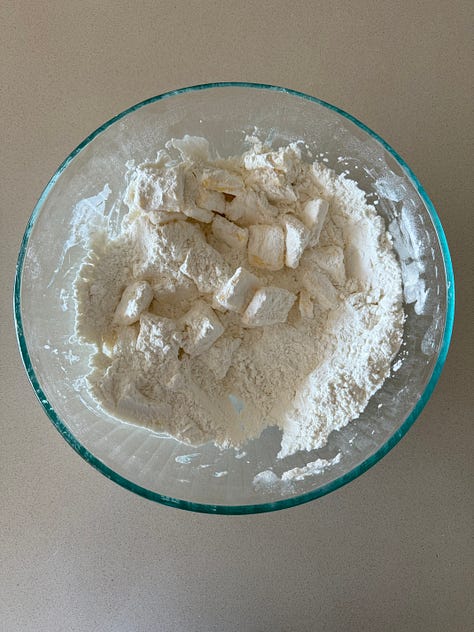
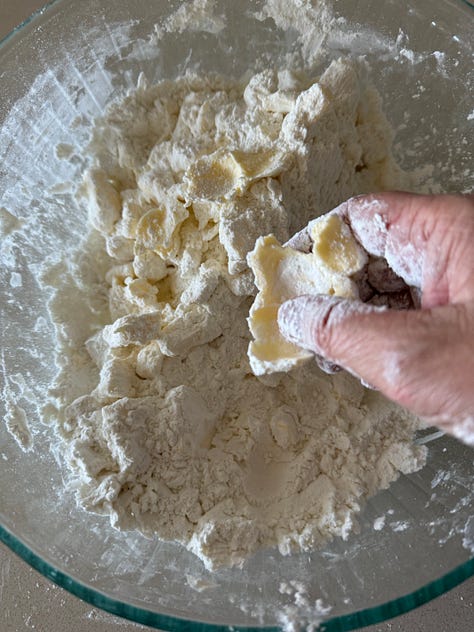
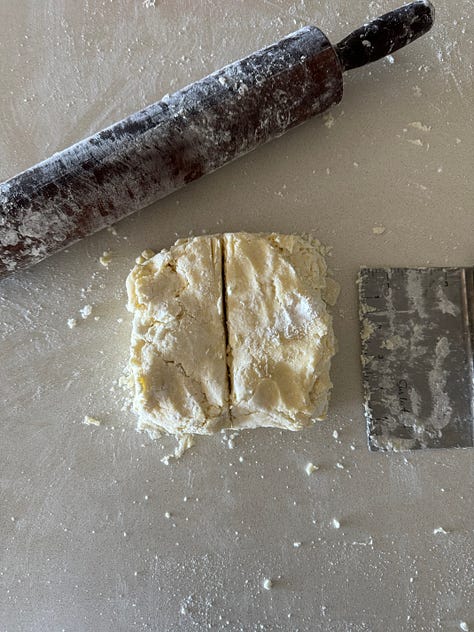
On the filling:
Adding thickener to pie filling can be tricky—I always err on the side of a looser filling because gummy fillings are just the worst. The amount given was for a very juicy filling, as you can see in the photo, but the finished pie is sliceable yet not at all gummy. Raspberries and strawberries release a ton of juice, blackberries and blueberries less. I used roughly an equal part of raspberry:blueberry:blackberry.
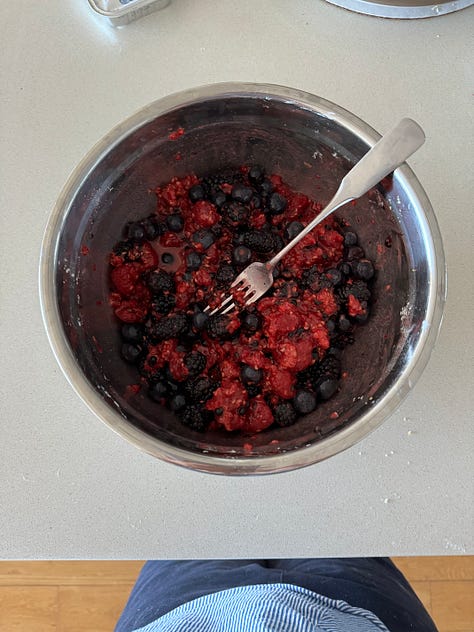
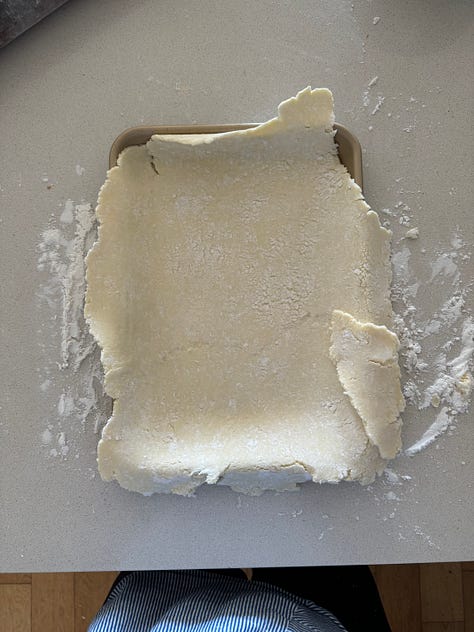
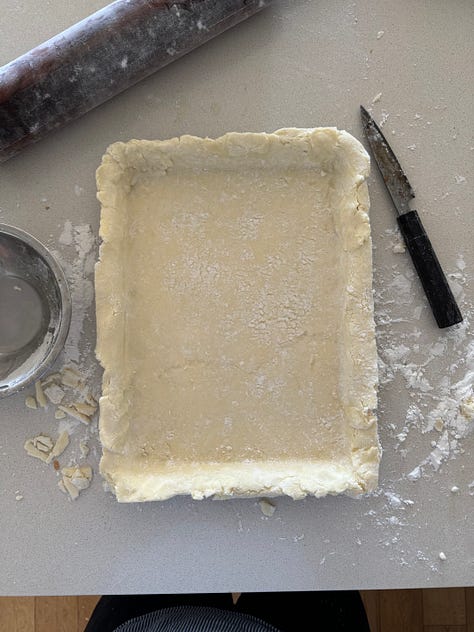
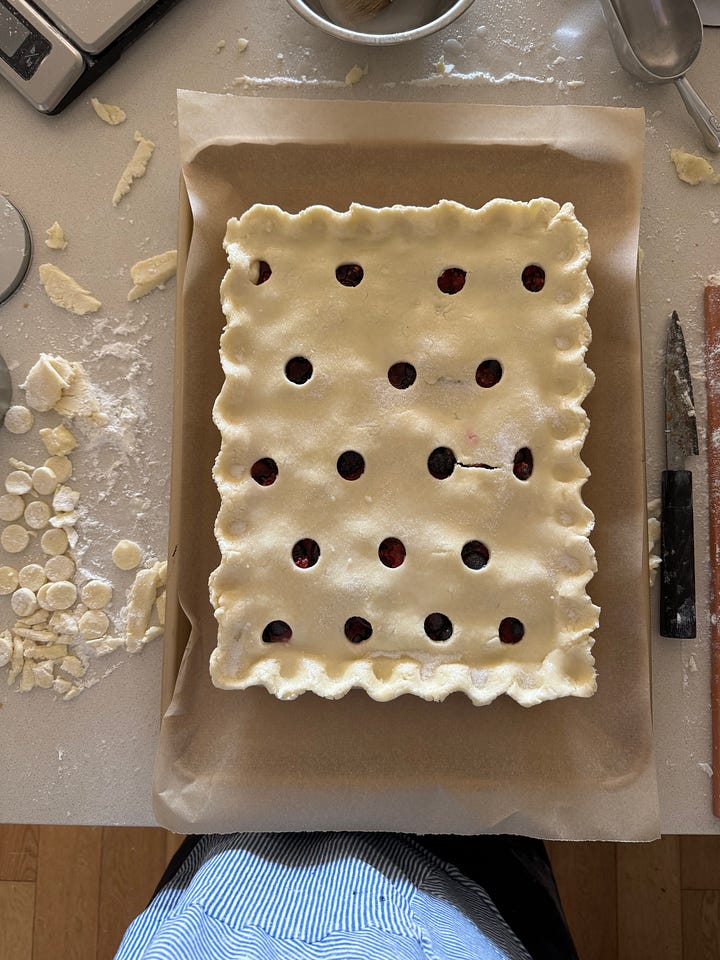
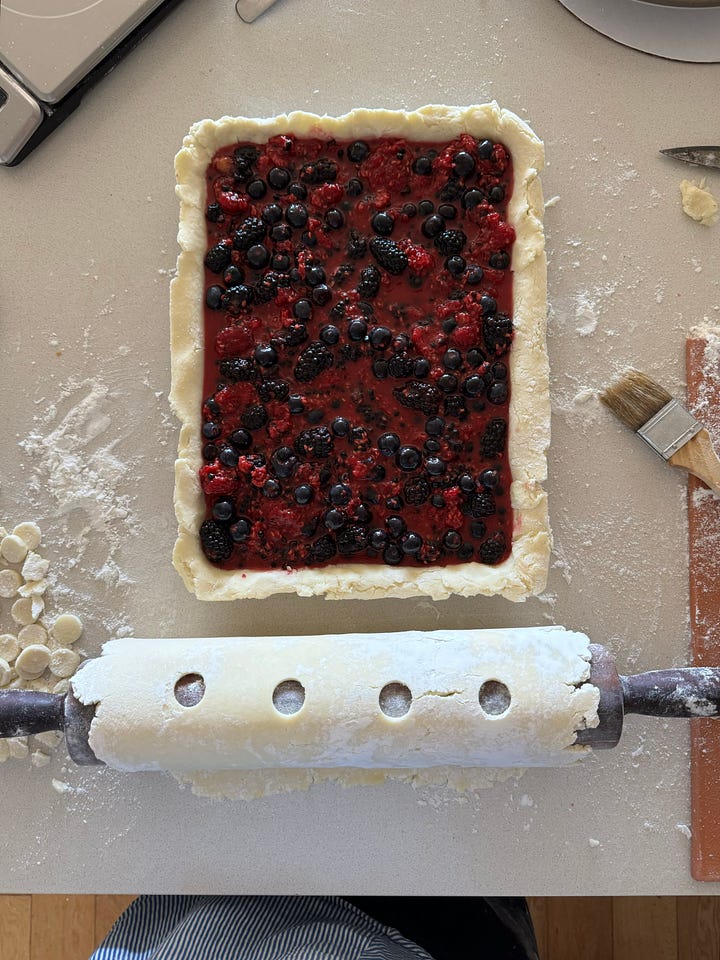
Keep reading with a 7-day free trial
Subscribe to Have Your Cake to keep reading this post and get 7 days of free access to the full post archives.



